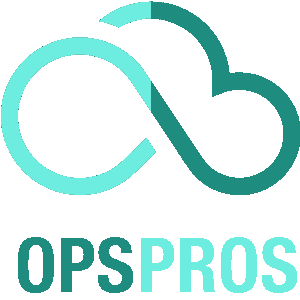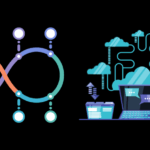
Site Reliability Engineering, or SRE, is a set of reliability engineering practices that ensures high levels of reliability and efficiency in systems. SRE teams are responsible for maintaining and improving the reliability and performance of systems, and their roles and responsibilities are critical to the success of an organization’s technology infrastructure.
What is Site Reliability Engineering (SRE)?
Site Reliability Engineering (SRE) is a discipline that merges software engineering and operations to manage highly scalable and reliable systems. SRE teams are responsible for ensuring that services and applications are available, efficient, and performant. They work alongside development teams to design and execute reliability engineering practices at every stage of the software development lifecycle.
As part of their roles, SREs set service level objectives (SLOs), monitor systems to identify and mitigate incidents, automate processes as much as possible, and continuously improve systems for optimal reliability. By adopting SRE methodologies, organizations can reduce downtime, improve performance, and enhance the overall customer experience.
Key Principles of Site Reliability Engineering
Site Reliability Engineering (SRE) methodologies are guided by a set of key principles that are essential in maintaining reliable systems. These principles, when applied consistently and effectively, can help organizations achieve high levels of uptime and optimal performance.
Error Budgets
One of the fundamental principles of SRE is the use of error budgets. Error budgets are a way to quantify the amount of reliability that can be sacrificed in favor of development velocity. This concept helps teams strike a balance between innovation and reliability by setting a specific threshold for acceptable levels of downtime or errors.
In order to ensure that error budgets are effective, it’s important to establish clear communication channels between development and operations teams. This can involve regular meetings, shared dashboards, and other mechanisms that foster collaboration and transparency.
Automation
Automation is another key principle of SRE. By automating routine tasks such as deployment, monitoring, and scaling, teams can reduce the risk of human error and improve the efficiency of their operations. This can free up time for teams to focus on more strategic initiatives and innovation.
Automation can also help teams achieve consistency in their operations. By using standardized processes and tools, teams can reduce the likelihood of configuration drift or other inconsistencies that can lead to downtime or performance issues.
Monitoring
Monitoring is a critical aspect of SRE that involves tracking various metrics and indicators to proactively identify issues before they become critical. This can involve monitoring indicators such as response times, error rates, and resource utilization, among others.
Effective monitoring is essential for maintaining system reliability, and it can also help teams improve performance and reduce costs. By identifying and addressing performance bottlenecks or other issues, teams can optimize their systems to deliver better performance and reduce the need for costly infrastructure upgrades.
Incident Management
Incident management is another important principle of SRE. This involves establishing clear processes and procedures for addressing incidents, such as outages or other critical events.
Effective incident management requires a coordinated effort between development and operations teams. It involves establishing clear roles and responsibilities, defining communication channels, and implementing tools and processes that enable rapid response and resolution.
By following these key principles of SRE, organizations can achieve high levels of reliability and performance in their systems. However, it’s important to note that implementing SRE practices is an ongoing process that requires continuous improvement and adaptation.
Implementing SRE in Your Organization

Implementing SRE practices requires a thoughtful and strategic approach. Below are the key steps organizations should take to ensure a successful implementation:
Set Objectives and Define Metrics
The first step in implementing SRE practices is to set clear objectives and define metrics to measure progress towards those objectives. This involves identifying key performance indicators (KPIs) that align with business goals and establishing a baseline for current system reliability and performance.
Once objectives and metrics have been established, it’s important to communicate them across the organization to ensure everyone is aligned and working towards the same goals.
Foster Collaboration between Dev and Ops Teams
Implementing SRE practices requires collaboration between development and operations teams. To achieve this, it’s recommended to establish cross-functional teams focused on specific objectives. This helps break down silos and fosters a culture of collaboration.
It’s also important to establish clear communication and feedback mechanisms between teams. This ensures that issues are identified and resolved quickly, and that everyone is informed of progress towards objectives.
Automate, Automate, Automate
SRE practices rely heavily on automation to improve system reliability and efficiency. This includes automating tasks such as provisioning infrastructure, deploying code changes, and monitoring system performance.
By automating these tasks, organizations can reduce the risk of human error, speed up deployment cycles, and free up time for SRE teams to focus on more strategic tasks.
Continuously Monitor and Improve
One of the key principles of SRE is continuous improvement. This involves continually monitoring system performance and identifying areas for improvement.
Organizations should establish processes for monitoring system reliability and performance, and use this data to identify areas for improvement. This includes tracking system errors, analyzing user behavior, and identifying bottlenecks in the system.
By continually monitoring and improving system performance, organizations can ensure that their systems are reliable, efficient, and able to meet the needs of their users.
Site Reliability Engineering Tools and Technologies

Implementing Site Reliability Engineering (SRE) methodologies requires the use of different tools and technologies to achieve reliability and efficiency. Here are some of the most commonly used tools and technologies:
Infrastructure-as-Code
Infrastructure-as-Code (IaC) is a process of managing and provisioning infrastructure through code rather than manual configuration. IaC tools like Terraform and CloudFormation enable SRE teams to automate infrastructure configuration, which improves consistency, reliability, and speed of deployment.
Continuous Integration and Deployment
Continuous integration (CI) and deployment (CD) tools like Jenkins and GitLab automate the build, test, and deployment process, allowing SRE teams to deploy new code regularly and quickly. This improves reliability and reduces downtime, as well as enabling teams to detect and resolve issues more efficiently.
Incident Response Tools
Incident response tools like PagerDuty and VictorOps help SRE teams detect, triage, and resolve incidents quickly and efficiently. These tools enable collaboration across teams, improve incident response times, and help prevent future incidents by identifying and resolving underlying issues.
Monitoring and Alerting
Effective monitoring and alerting tools are critical to maintaining system reliability. Tools like Prometheus and New Relic monitor system health and performance, while also alerting SRE teams to issues and enabling rapid resolution. With these tools, SRE teams can proactively identify and address issues before they escalate.
Log Management
Log management is essential for effective troubleshooting and debugging. Tools like ELK Stack and Sumo Logic allow SRE teams to collect, aggregate, and analyze logs from different sources, which helps identify underlying issues and improve system reliability.
Challenges and Best Practices in SRE

While Site Reliability Engineering (SRE) can greatly improve the reliability and efficiency of systems, implementing it can pose several challenges. However, with the right approach, these challenges can be overcome. Here are some best practices to help you succeed:
Managing Complexity
As systems become more complex, managing them can become a daunting task. However, SRE provides a framework for breaking down complex systems into manageable components, using automation to reduce manual labor and increase consistency.
One useful practice is to use Infrastructure as code (IaC) for managing your systems. This involves creating scripts or configuration files that define the entire infrastructure stack, including servers, networks, databases, and applications, using version control systems like Git to track changes over time.
Scaling SRE Practices
As your organization grows, so does the complexity and scale of your systems. SRE needs to be scaled to meet these growing demands. This can involve expanding the SRE team, adopting new technologies and practices and implementing automation at scale.
One best practice is to adopt a phased approach when scaling SRE practices. Start with a small number of systems, achieve success and then scale gradually across your organization. This will help ensure that everyone is on board and can adopt the new practices successfully.
Continuous Improvement
SRE is an iterative process that requires continuous improvement. This involves tracking key metrics, such as Mean Time to Repair (MTTR), availability, and reliability, and using them to identify areas for improvement.
One best practice is to establish a culture of blameless post mortems. Post mortems involve analyzing incidents and failures to identify their root causes, and then implementing changes to prevent similar incidents from occurring in the future. Blameless post mortems encourage openness and honesty, which in turn helps drive continuous improvement.
By following these best practices, you can overcome the challenges of implementing SRE and achieve greater reliability and efficiency in your systems.
The Future of Site Reliability Engineering
Site Reliability Engineering (SRE) has come a long way since its inception at Google in 2003. As technology continues to evolve at an unprecedented pace, so does the need for reliable, high-performance systems. Here are some future trends and advancements in SRE that are worth keeping an eye on:
- Machine Learning and AI: As more data is collected from systems and users, machine learning and artificial intelligence will play an increasingly important role in SRE. With the ability to predict system failures and automate incident resolution, these technologies could revolutionize the way SRE teams operate.
- cloud-native Computing: With the rise of cloud computing, more and more applications are being built specifically for cloud environments. This shift towards cloud-native computing presents new opportunities and challenges for SRE teams, who need to adapt their methodologies to suit these new environments.
- Shift-Left Testing: By moving testing earlier in the development cycle, shift-left testing allows SRE teams to identify and fix issues before they become critical. This approach can significantly improve system reliability and reduce the need for reactive incident response.
As SRE continues to evolve, it’s important for organizations to stay up-to-date with the latest trends and technologies. By embracing these advancements, they can ensure that their systems remain reliable, efficient, and resilient in the face of ever-changing technological landscapes.
Wrapping Up

In today’s fast-paced digital world, reliable and high performing systems are critical for ensuring optimal user experience. Site Reliability Engineering (SRE) practices have emerged as an effective solution for achieving this goal.
Throughout this article, we have explored the key characteristics and benefits of SRE, including the essential reliability engineering practices employed in SRE methodologies. We have discussed the core principles that guide SRE methodologies, such as error budgets, automation, monitoring, and incident management.
We have also provided guidance on how to implement SRE practices within an organization, including setting objectives, establishing metrics, and fostering collaboration between development and operations teams. Additionally, we have explored various tools and technologies that can aid in implementing SRE methodologies, such as infrastructure-as-code, continuous integration and deployment, and incident response tools.
Real-world case studies of successful SRE implementations have been showcased, illustrating the benefits achieved in terms of increased reliability, improved performance, and reduced downtime. We have also discussed the common challenges faced during SRE implementation and provided best practices to overcome them.
FAQ

Q: What is Site Reliability Engineering (SRE)?
A: Site Reliability Engineering (SRE) is a set of practices that applies software engineering principles to operations. It aims to create reliable software systems by leveraging automation, adopting engineering best practices, and promoting a shared responsibility between development and operations teams.
Q: How does SRE differ from DevOps?
A: SRE is a subset of DevOps, focusing specifically on the reliability of software products. While DevOps aims to streamline the development process and integrate development and operations teams, SRE emphasizes the engineering aspect of operations to improve software reliability and promote agility.
Q: How can SRE improve software engineering productivity?
A: SRE can improve software engineering productivity by implementing automation to streamline the workflow and pipeline. By reducing toil and automating repetitive tasks, SRE allows developers to focus on more strategic and value-added activities, such as developing new features and improving software.
Q: What skill sets are required for a Site Reliability Engineer?
A: Site Reliability Engineers should have a strong background in software engineering and a good understanding of infrastructure and operations. They should possess skills in capacity planning, fault tolerance, and responding quickly to incidents.
Q: Is SRE recommended from Medium?
A: Yes, SRE is recommended from Medium as a practice to improve software reliability and promote a more efficient development process.
Q: How can SRE help in achieving fault tolerance?
A: SRE can help achieve fault tolerance by designing systems that can withstand failures and respond quickly to incidents. This involves implementing redundancy, monitoring systems for early detection of issues, and having a well-defined on-call process.
Q: What is the role of automation in SRE?
A: Automation plays a crucial role in SRE as it helps streamline operations, reduce manual errors, and improve efficiency. By automating repetitive tasks, SRE allows for faster deployment, easier scaling, and better overall system reliability.
Q: How does SRE promote the concept of shared responsibility?
A: SRE promotes shared responsibility by encouraging collaboration between development and operations teams. Instead of isolating tasks and responsibilities, SRE encourages cross-functional teams to work together towards the common goal of ensuring reliable software and systems.
Q: Are there any recommended stories or resources to help understand SRE better?
A: Yes, Medium provides recommended stories to help demystify Site Reliability Engineering and gain a better understanding of its concepts, principles, and practices.
Q: How can SRE help in improving software engineering principles?
A: SRE can help improve software engineering principles by applying software engineering practices to operations. This includes implementing version control, continuous integration, automated testing, and other best practices traditionally associated with software development.
Noah is an accomplished technical author specializing in Operations and DevOps, driven by a passion ignited during his tenure at eBay in 2000. With over two decades of experience, Noah shares his transformative knowledge and insights with the community.
Residing in a charming London townhouse, he finds inspiration in the vibrant energy of the city. From his cozy writing den, overlooking bustling streets, Noah immerses himself in the evolving landscape of software development, operations, and technology. Noah’s impressive professional journey includes key roles at IBM and Microsoft, enriching his understanding of software development and operations.
Driven by insatiable curiosity, Noah stays at the forefront of technological advancements, exploring emerging trends in Operations and DevOps. Through engaging publications, he empowers professionals to navigate the complexities of development operations with confidence.
With experience, passion, and a commitment to excellence, Noah is a trusted voice in the Operations and DevOps community. Dedicated to unlocking the potential of this dynamic field, he inspires others to embrace its transformative power.







